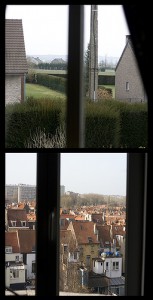 (Note: I’m just back from a fascinating trip to Beijing, speaking to arts management educators from around China at the China Conservatory of Music. I’ll have some to say about what I learned in the future. For now, I was struck, once again, by how the concern for community engagement in the arts is by no means limited to the U.S.)
(Note: I’m just back from a fascinating trip to Beijing, speaking to arts management educators from around China at the China Conservatory of Music. I’ll have some to say about what I learned in the future. For now, I was struck, once again, by how the concern for community engagement in the arts is by no means limited to the U.S.)
——————–
Last time (Lessons from the Road) I gave an overview of the lessons of my last four months of travels. I wanted to pull out a couple in particular to highlight here. Working with arts leaders in Wisconsin at a workshop sponsored by Arts Wisconsin, I met people from both cities and from very small towns. In particular, there were two stories that are just too good not to share. The first had to do with a presenter from a small town who reported on going to a marketing workshop earlier in the year. She had been asked how she communicated information to her constituents about performances and, responded, somewhat baffled, “I call them.” There are real advantages to being in a small town.
While that’s primarily just a good story (although it reminds us that word of mouth is always the best advertising, if you can tap it), a related story is both fun and valuable. Kelli Tatum, the Executive Director of the Widespot Performing Arts Center, participated in the workshop. She explained to the attendees that her venue had a seating capacity of 120. That’s not so unusual, but they are located in Stockholm, WI which has a population of 66. Clearly, the only way to survive in that situation is to be highly engaged with the entire population (and then some).
And when I was in Cincinnati I had the pleasure of meeting with the leaders of the many community arts centers in that city. Each had different needs, but all were concerned with effectively reaching their particular neighborhood or area. I realized very quickly that their approach needed to be nearly identical to that taken by the leaders of arts organizations in Wisconsin’s small towns.
A particularly interesting development in my meeting with them had to do with their angst about the new approach to funding, based on community outcomes, that ArtsWave has initiated there. They were, to a person, concerned that they could not compete with the major arts institutions in Cincinnati. Their attendance numbers are small (relatively) and they felt that would put them at a disadvantage. I suggested considering another metric. (I never imagined I’d actually use that word.) I asked them to identify the total number of people in the communities they were designed to serve and note the percentage of that population they served. That number, their reach percentage, will be, I am confident, far higher than that of their major institution competitors. That’s also not a bad way for rural arts leaders to demonstrate effectiveness to outsiders.
I’ve said for a long time that arts leaders in small communities are far better at understanding and implementing community engagement than their peers in larger settings. They have to be. But it is also true that local arts centers in urban areas are similarly attuned to their constituents. There are valuable lessons to be learned from them as we seek to be better community engagers.
Engage!
Doug
Photo: ![]()
![]()
![]() Some rights reserved by JLA Kliché
Some rights reserved by JLA Kliché
